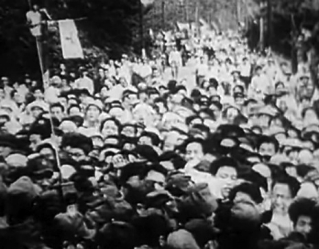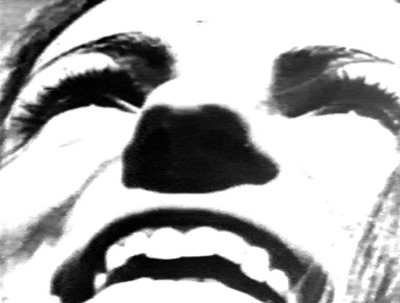Wojciech Bruszewski (1947–2009) was one of the founders and outstanding members of the Workshop of the Film Form at the Film School in Łódź, and he shared the group’s spirit of analytical and media critique of mainstream cinematography. Bruszewski approached human perception as dependent, not on material reality, but ratheron its representations, which can be interpreted and processed formally through media technologies. Guided by the assumption that reality can never be reached in its pure form but is always mediated, he emphasized in his works the idea that references in a film always lead to other representations of reality, bypassing reality itself.
Clapper is a dynamic and heavily edited (slowed down, sped up, rewound, looped, and so one) mixture of archival black-and-white images. Bursting with tension, the footage of political rallies, street scenes, bombardments, and other disturbing events from both the pre– and the post–World War II period unfolds to the sound track of Janis Joplin singing “Summertime,” as though this were a music video clip. The film was one of the first “found footage” works in the history of Polish experimental film and artists’ moving image works and bears testimony to Bruszewski’s pioneering investigations, which never lost their innovative edge throughout his career, which ended with his untimely death in 2009. — Łukasz Mojsak
The organizers would like to thank Weronika Czołnowska and the Państwowa Wyższa Szkoła Filmowa, TV i Teatralna im. L. Schillera w Łodzi (The Polish National Film, Television and Theatre School in Łódź), for their help in making a screening of this film possible in Washington.


